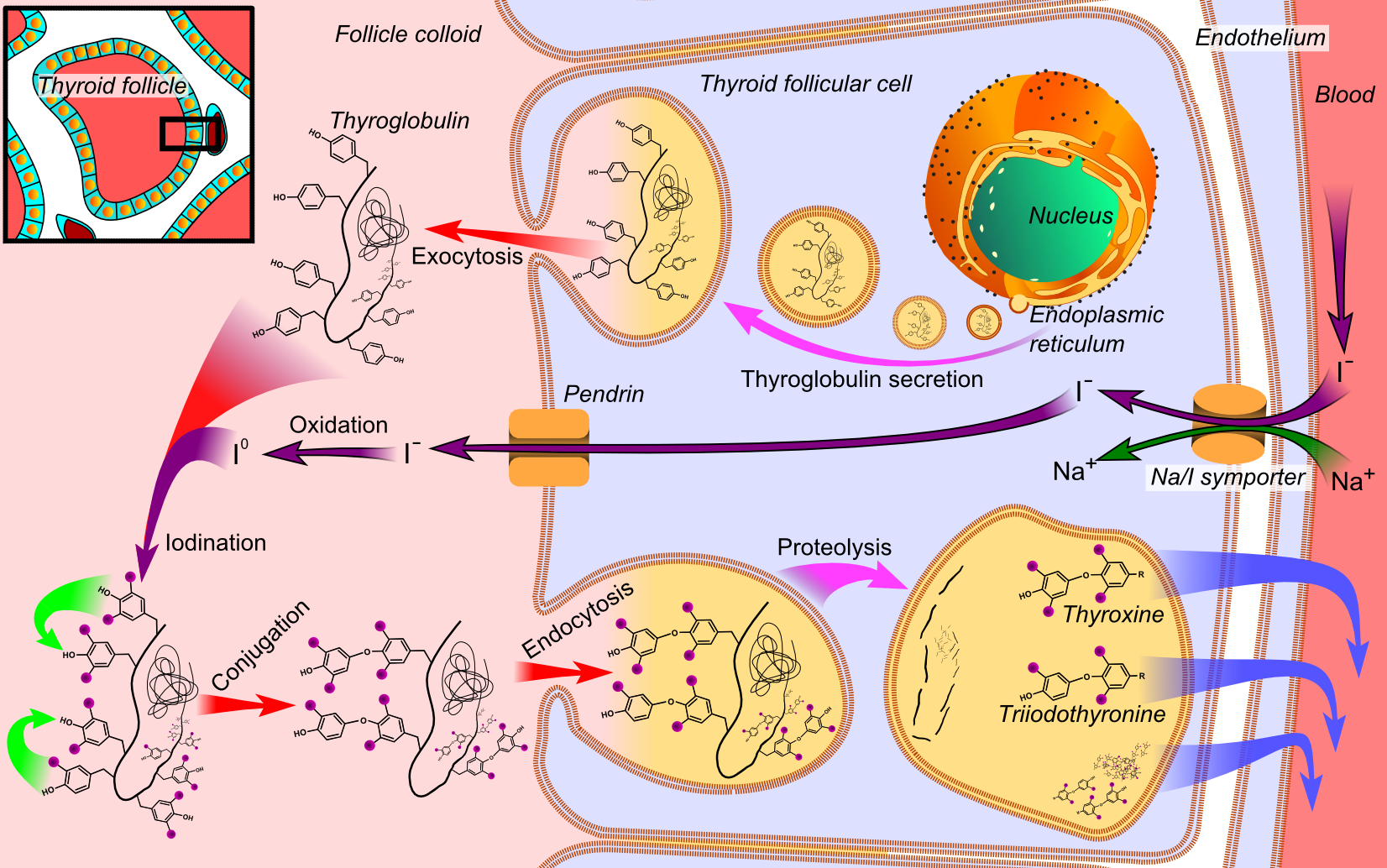The thyroid hormones are:
a. Thyroxine (T4)
b. Tri-iodothyronine (T3)
They are synthesized and secreted by the thyroid gland under the hormonal control of the hypothalamic and anterior pituitary unit.
Thyroid hormones influence the rate of cell metabolism to increase
a. Oxygen consumption
b. Heat production
c. Synthesis of many enzymes which then promote the metabolism of proteins, fats, carbohydrates (e.g. hepatic gluconeogenesis, glycolysis and glucose catabolism)
d. Central nervous system (CNS) and cardiovascular sensitivity to catecholamines.
Production of Thyroid Hormones
The main structural feature of the highly vascular thyroid gland is the follicles which synthesize, store and secrete thyroid hormones.
1. Trapping iodide
a. The thyroid contains 90-95% of body iodide, trapping it within the follicular cells against a high concentration gradient.
b. This energy-dependent uptake is competitively inhibited by thiocyanate and perchlorate.
2. Organification
a. The trapped iodide is enzymatically oxidized to iodine, which then iodinates some of the tyrosyl residues of thyroglobulin (TG). One or two iodine atoms can be attached to the tyrosyl groups forming monoiodotyrosine (MIT) and di-iodotyrosine (DIT)
b. Iodination is blocked by carbimazole and excess iodide
3. Coupling
a. MIT and DIT can be enzymatically coupled in two ways:
i. MIT + DIT –> T3
ii. DIT + DIT –> T4
b. Coupling is inhibited by propylthiouracil and by carbimazole
4. Secretion
a. Thyroglobulin is taken up from the colloid into the follicular cells by pinocytosis and then degraded by proteases.
b. The released T4 and T3 is secreted by the follicular cells into the plasma, whilst excess iodotyrosine are degraded and the iodide largely reutilized.
c. The majority of hormones secreted is T4.
 howMed Know Yourself
howMed Know Yourself





